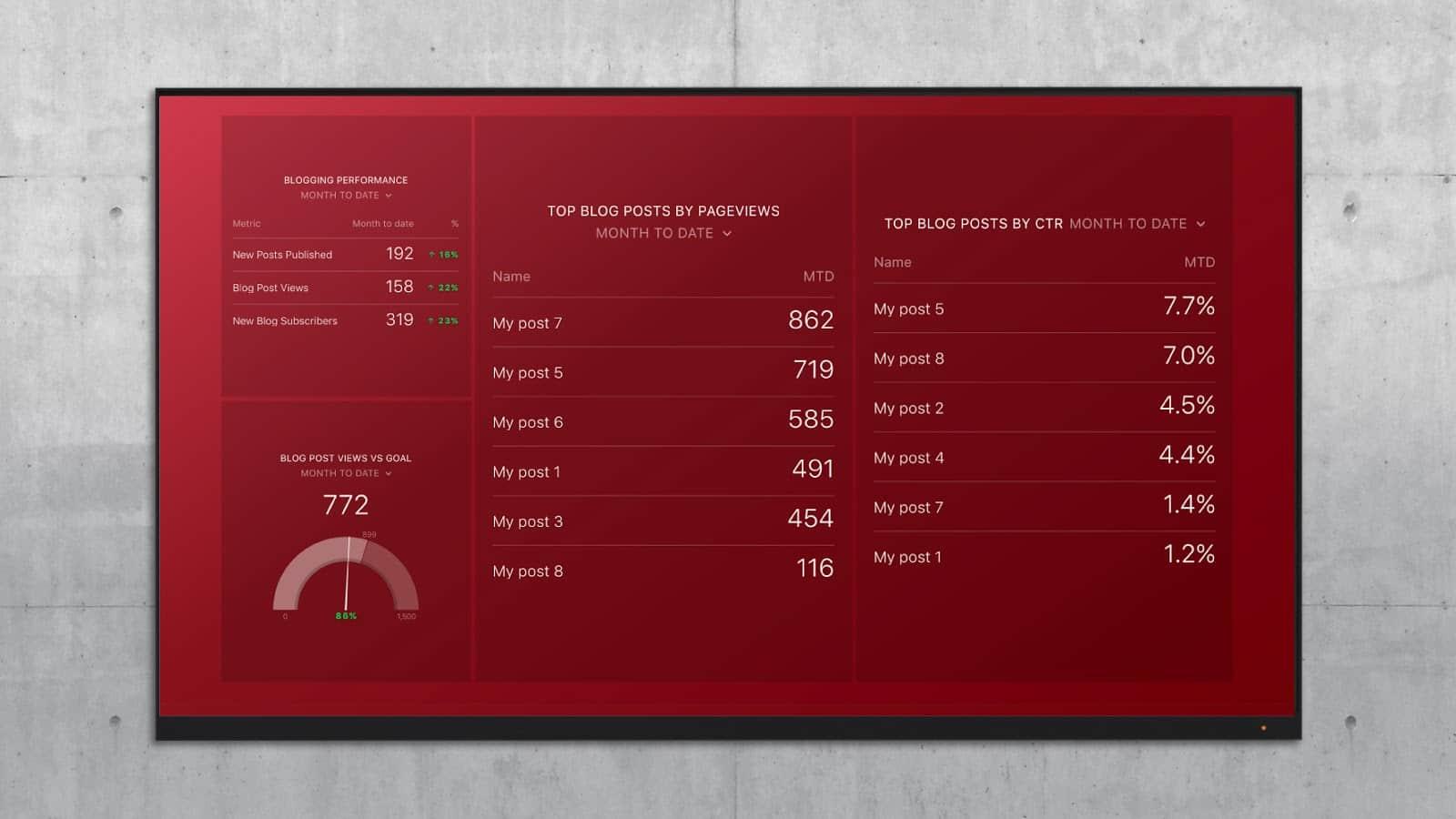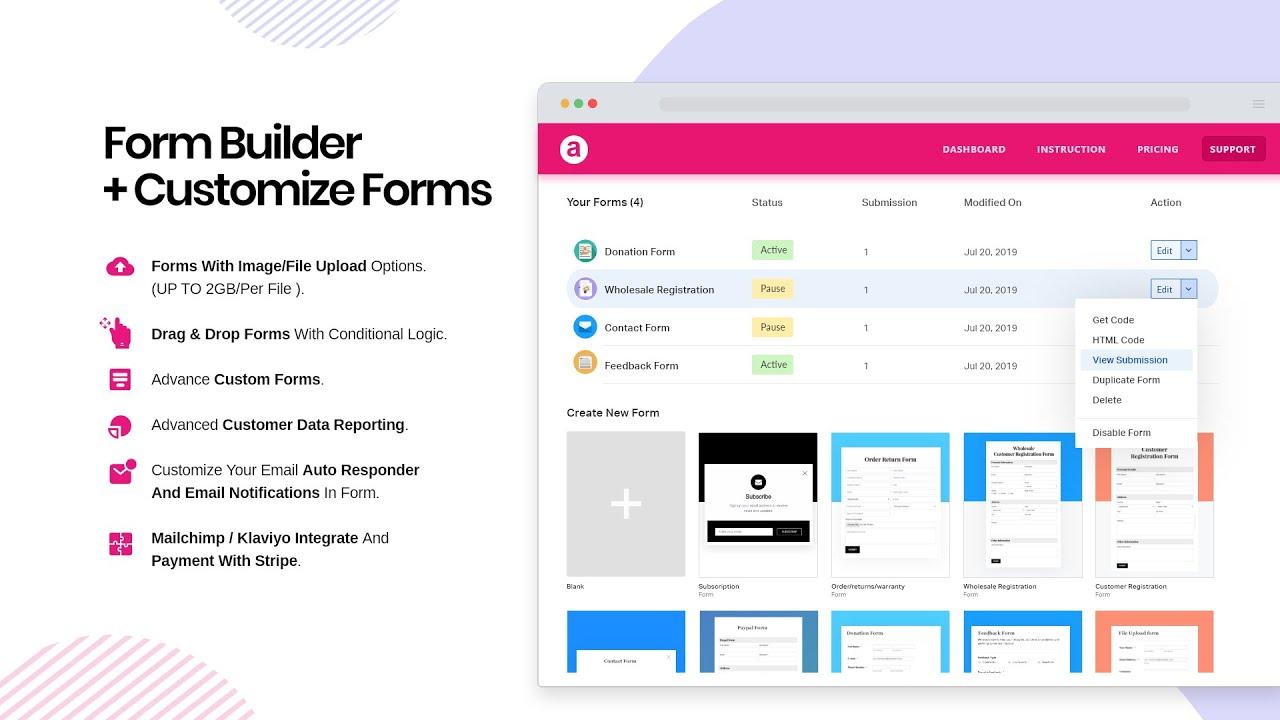Want to grab Google’s attention and keep readers engaged? Start with a catchy headline, use short paragraphs for easy reading, and sprinkle in visuals. Don’t forget a strong introduction and clear subheadings—these elements create a blog post structure that shines!
The Blog Post Structure That Google (and Readers) Love
Are you tired of pouring your heart and soul into blog posts that just don’t seem to hit the mark? You’re not alone! With so much content flooding the internet, it can feel like a daunting task to create something that captivates both Google’s algorithms and your readers’ attention. But fear not! In this article, we’re diving into the blog post structure that not only catches the eye of search engines but also keeps your readers coming back for more. Imagine crafting posts that are not just informative but also engaging and easy to read—sounds dreamy, right? Well, it’s entirely possible! Let’s unpack the key elements of a blog post that resonates with Google and delights your audience, ensuring that your content stands out in the crowded digital landscape. Ready to transform your blogging game? Let’s get started!
Understanding the Importance of Blog Structure for SEO and Engagement
Creating an effective blog structure is not just about aesthetics; it plays a crucial role in enhancing both SEO performance and reader engagement. When your blog posts are well-organized, they help search engines like Google understand the content better, which can lead to higher rankings. Proper structure means using headings, subheadings, bullet points, and short paragraphs to guide your readers through the content seamlessly.
One of the key elements to consider is the use of headings and subheadings. These elements not only break up the text visually but also help readers scan the content quickly. When you use H1 for your title and H2 and H3 for subheadings, you create a hierarchy that makes navigation easier. Additionally, including relevant keywords in these headings can significantly boost your SEO. Here’s how you might structure your headings:
| Heading Level | Purpose | SEO Benefit |
|---|---|---|
| H1 | Main title of the post | Primary keyword focus |
| H2 | Main sections or topics | Sub-keywords |
| H3 | Subsections under H2 | Additional context |
Another important aspect of blog structure is the use of bullet points and lists to present information succinctly. Readers often skim through content, and lists can help emphasize key points or steps in a process. For instance, when outlining tips or steps, consider the following format:
- Clarity: Make sure your points are easy to understand.
- Relevance: Stick to the topic at hand to keep readers engaged.
- Actionable insights: Provide tips that readers can implement immediately.
Lastly, don’t underestimate the importance of internal linking. A well-structured blog encourages you to link to other relevant posts within your site, improving navigation and keeping readers on your page longer. This not only enhances the user experience but also sends positive signals to search engines about your site’s authority and relevance.
Incorporating these structural elements effectively will not only optimize your blog for search engines but will also create a more enjoyable reading experience for your audience. Keeping your content organized ensures that whether someone is just skimming or diving deep into your post, they will find what they need quickly and effortlessly.

Crafting Compelling Headlines That Grab Attention
When it comes to blogging, the headline is your first impression, and we all know how crucial first impressions can be. A well-crafted headline not only draws in readers but also sets the stage for the content that follows. Therefore, mastering the art of headline creation is essential for any blogger looking to boost engagement and visibility.
Start by considering the core message you want to convey. What is the main takeaway for your readers? Once you have that figured out, employ the following strategies to craft a compelling headline:
- Use Numbers: Headlines with numbers often attract more attention. For example, “5 Tips for Better Time Management” promises specific, digestible advice.
- Make a Bold Statement: Headlines that challenge conventional thinking can spark curiosity. Statements like “Why Traditional Marketing is Dead” can pull readers in.
- Ask a Provocative Question: Questions engage readers directly. A headline such as “Are You Making These Blogging Mistakes?” invites them to explore their own experiences.
- Include Keywords: Incorporating keywords not only helps with SEO but also makes it clear what your post is about. For example, “SEO Strategies for Small Businesses” is both targeted and informative.
Another effective technique is to create a sense of urgency. Phrases like “Don’t Miss Out” or “Limited Time Offer” can push readers to click immediately rather than putting it off for later. It’s all about motivating your audience to take action right away. A headline like “Unlock Your Blog’s Potential Today!” creates a compelling call to action.
Consider the emotional impact of your headlines as well. Words that evoke feelings of excitement, fear, or curiosity can enhance your headline’s effectiveness. For instance, “The Secret to Overnight Success” plays on the desire for quick results, drawing readers in with the allure of simplicity and speed.
don’t underestimate the power of A/B testing your headlines. Different audiences respond to different styles, so experimenting with variations can provide insight into what resonates best with your readers. A simple table can illustrate this approach:
| Headline Variation | Engagement Rate |
|---|---|
| 5 Tips for Blogging Success | 25% |
| Unlock Your Blogging Potential Now! | 40% |
| Are You Committing These Blogging Blunders? | 30% |
By applying these techniques, you’re not just creating headlines; you’re crafting a gateway to your content that invites readers to dive deeper. The right headline can make all the difference in whether your blog post gets the attention it deserves. So take the time to refine your headlines—they’re worth it!

Mastering the Art of the Engaging Introduction
When it comes to grabbing your audience’s attention, the introduction is your golden ticket. It’s the first impression, the hook that reels in readers and keeps them engaged. An effective introduction does more than just present the topic; it ignites curiosity and invites readers to explore further. Here are some strategies to elevate your introductory game:
- Start with a Question: Pose a thought-provoking question that relates to your topic. This not only engages readers but also makes them reflect on their own experiences.
- Use a Striking Statistic: Present an eye-opening statistic that highlights the relevance of your subject. Numbers tend to capture attention and lend credibility.
- Share a Compelling Anecdote: A brief story or personal experience can humanize your content and create an emotional connection with your audience.
- Quote a Relevant Expert: Citing a well-known figure can lend authority to your post and intrigue readers who respect that individual’s opinion.
Each of these techniques can be powerful, but the key is to tailor your introduction to your audience. Consider what resonates with them, and what will make them want to continue reading. Your goal should be to create an emotional or intellectual spark that makes your readers think, “I need to know more!”
It’s also important to keep your introduction concise. Aim for clarity and brevity while still packing a punch. Avoid overwhelming your readers with too much information right away; instead, provide just enough to entice them into the body of your post.
Don’t forget to include relevant keywords naturally within your introduction. This is not just for SEO purposes; well-placed keywords can signal to readers what they can expect and reinforce the topic’s relevance. Balance is crucial—your introduction should flow seamlessly while still being optimized for search engines.
as you craft your introductory sentences, think about the transition into the main content. A well-structured introduction leads naturally into your post, setting the stage for a smooth reading experience. This coherence will not only satisfy your audience but also enhance your content’s performance in search rankings.
By , you’re setting the foundation for a successful blog post—one that resonates with both readers and search engines alike. So go ahead, experiment with different styles and approaches until you find the voice that best aligns with your brand and captivates your audience.
Using Subheadings to Break Up Content and Enhance Readability
When crafting a blog post, subheadings serve as your trusty sidekick, guiding readers through the content like a well-marked map. They break down large chunks of text, making it easier for your audience to digest the information. This not only enhances readability but also keeps readers engaged, encouraging them to stick around for the entire post.
Consider the following benefits of using subheadings:
- Improved Scannability: Most readers skim through content before diving in. Subheadings act as signposts, allowing them to quickly find sections that interest them.
- Enhanced Structure: A well-structured post with clear subheadings gives your writing a logical flow. This organization helps your audience follow your argument or story effortlessly.
- SEO Benefits: Search engines like Google appreciate content that is organized and easy to read. Using relevant keywords in your subheadings can improve your chances of ranking higher in search results.
- Encouraged Engagement: Subheadings can pique curiosity. A compelling subheading can draw readers in, leading them to explore the content beneath it.
To maximize the effectiveness of your subheadings, keep them concise and relevant to the content that follows. Consider using questions or intriguing statements to draw readers in. For example:
| Subheading Example | Description |
|---|---|
| What Are the Benefits of Subheadings? | Explores why subheadings are essential for any blog post. |
| How to Create Catchy Subheadings | Tips on crafting engaging and relevant subheadings. |
| Common Mistakes to Avoid | A rundown of pitfalls to steer clear of when formatting subheadings. |
Avoid making your subheadings too long or complicated. Aim for clarity, ensuring that they reflect the content accurately. This approach not only aids in readability but also encourages your audience to engage more deeply with the material.
consider the visual appeal of your subheadings. Use formatting techniques, such as bold text or different font sizes, to make them stand out. This will not only catch the reader’s eye but also guide their focus throughout the post. Remember, the goal is to create an inviting reading experience that keeps your audience coming back for more!
The Power of Bullet Points and Lists for Scannability
In today’s fast-paced digital world, readers often skim through content rather than reading every word. This is where the strategic use of bullet points and lists comes into play. They not only break up text but also serve as visual cues that guide the reader’s eye to the most important information. When used effectively, bullet points and lists can enhance the overall readability of your blog posts, making them more appealing to both Google and your audience.
Consider the following benefits of incorporating lists into your writing:
- Enhanced Clarity: Lists can distill complex ideas into digestible pieces, making it easier for readers to understand your message.
- Quick Information Retrieval: Bullet points allow readers to find key information quickly, which is particularly valuable for those who are short on time.
- Visual Appeal: A well-structured list or bullet point format creates a break in the text, reducing the intimidation factor of large blocks of content.
- Improved Engagement: Engaging formats encourage readers to interact with your content and can lead to longer time spent on the page.
When formatting your lists, it’s important to keep them concise and relevant. Avoid overcrowding your bullet points with excessive information. Aim for clarity and simplicity, ensuring that each item adds value to the overall narrative. For instance, you could use a simple two-column table to compare benefits, making it instantly easier for readers to absorb your key points:
| Benefit | Description |
|---|---|
| Better Readability | Lists make your content scannable and easy to digest. |
| SEO Optimization | Google favors well-structured content, which can improve your ranking. |
| Increased Retention | Readers are more likely to remember information presented in lists. |
Additionally, utilize actionable phrases in your lists. Phrases that prompt readers to think or act can significantly boost engagement. For example:
- Try this technique: Implementing bullet points in your next blog post.
- Consider these tips: Use parallel structure and keep each item succinct.
- Don’t forget: Update your lists regularly to keep information fresh and relevant.
Ultimately, the goal is to create content that resonates with your readers while also meeting the expectations of search engines. By employing bullet points and lists strategically, you not only enhance the scannability of your posts but also pave the way for higher engagement rates and improved SEO performance. So, the next time you sit down to craft your blog post, remember to harness the power of lists for a clearer, more impactful message.

Incorporating Visuals to Complement Your Message
In the world of blogging, visuals are not just pretty decorations; they are critical tools for enhancing your message. When you sprinkle eye-catching images, infographics, or videos throughout your content, you create a more engaging reading experience. Readers are more likely to absorb and retain information that is paired with compelling visuals, making your content not only more enjoyable but also more effective.
So, how can you effectively incorporate visuals into your blog posts? Here are some strategies to consider:
- Use High-Quality Images: Always opt for clear and relevant images that resonate with your message. A blurry or irrelevant photo can distract from your content rather than complement it.
- Infographics for Complex Information: When explaining complex data or processes, infographics can simplify your message. They allow readers to digest information quickly and effectively.
- Videos for Deeper Engagement: Embedding videos can create a dynamic element to your blog post. A short video can explain concepts better than text alone, fostering a deeper connection with your audience.
It’s also essential to consider the placement of your visuals. Well-placed images can break up long blocks of text and keep your readers scrolling. Here are some tips for optimal placement:
- Above the Fold: Place a striking image at the top of your post to capture attention immediately.
- In-Line with Text: Add visuals within the body of your text to illustrate points as they arise.
- At the End: Use a strong visual conclusion to leave a lasting impression and encourage sharing.
Moreover, don’t underestimate the power of captions. A well-crafted caption can provide context to your visuals and enhance understanding. It’s also a great opportunity to add personality or humor to your post, making it more relatable to your audience.
| Type of Visual | Purpose | Best Used For |
|---|---|---|
| Images | Attract attention | General blog posts |
| Infographics | Simplify information | Data-heavy content |
| Videos | Engage viewers | Tutorials or demonstrations |
Remember, the goal is to enhance your narrative with visuals that elevate your content. Think strategically about how each visual element serves your overall message and engages your audience. By blending text and visuals seamlessly, you create a richer, more compelling blog post that resonates with both Google’s algorithms and your readers.

Creating a Strong Conclusion That Encourages Action
Wrapping up your blog post effectively is just as important as how you started. A captivating conclusion not only summarizes your key points but also leaves your audience motivated to take action. Here’s how to craft a conclusion that resonates and compels your readers to engage further.
First, reiterate the core message of your post. This reinforces your main ideas and ensures they stick with your audience. Consider using a brief summary that highlights the most important aspects:
- Key Takeaway 1: Briefly restate your first main point.
- Key Takeaway 2: Highlight the second vital piece of information.
- Key Takeaway 3: Conclude with the last essential insight.
Next, encourage your readers to take action. This can be as simple as inviting them to comment, share the post, or explore related content. Use persuasive language that creates a sense of urgency or excitement:
“Don’t just let this information sit idle; implement these strategies today and watch your engagement soar!”
Additionally, consider including a call-to-action (CTA) that aligns with the content of your post. A well-placed CTA can guide your readers toward the next steps they can take, whether it’s signing up for a newsletter, downloading a resource, or following your social media channels:
| Action | Description |
|---|---|
| Subscribe | Join our mailing list for exclusive tips and tricks! |
| Comment | Share your thoughts below—your opinion matters! |
| Share | Spread the word on social media and help others! |
wrap things up with a thought-provoking statement or question that encourages ongoing reflection. This can spark interest and keep your readers engaged even after they leave your post:
“What steps will you take today to transform your blog into a powerful tool for engagement?”
By following these strategies, you can create a strong conclusion that not only summarizes your insights but also empowers your readers to take meaningful action. Remember, the goal is to make them feel inspired and ready to implement what they’ve learned!

Optimizing for SEO Without Sacrificing Quality
When it comes to writing for the web, the balance between SEO optimization and maintaining high-quality content can often feel like a tightrope walk. However, achieving both is not only possible, it’s essential for attracting both search engines and readers alike. Here are some effective strategies to enhance your blog’s visibility without compromising on the quality of your writing.
- Keyword Integration: Instead of stuffing your content with keywords, focus on naturally incorporating them. Use long-tail keywords that reflect user intent and fit seamlessly into your narrative.
- Engaging Headlines: Captivating headlines grab attention. Use power words and pose questions that spark curiosity, making readers eager to explore your content.
- Internal Linking: Enhance the user experience and SEO by linking to related posts within your blog. This not only helps with navigation but keeps readers engaged longer on your site.
Another key element is the structure of your content. Break your text into digestible sections using subheadings. This not only improves readability but also helps search engines understand the context of your content. A simple HTML structure can do wonders:
Main Topic
Supporting details...
Subtopic
Additional details...
Furthermore, consider using multimedia elements such as images, videos, or infographics. These not only enhance the user experience but also provide additional opportunities for optimization through alt text and descriptive captions. Just make sure they are relevant to the topic at hand.
never underestimate the power of high-quality backlinks. Collaborating with reputable sites can enhance your credibility and improve your position in search rankings. Focus on creating content that others naturally want to link to, whether it’s through original research, insightful opinions, or comprehensive guides.
| SEO Strategy | Quality Benefit |
|---|---|
| Keyword Research | Aligns content with reader intent |
| Engaging Headlines | Increases click-through rates |
| Internal Linking | Improves site navigation |
| Multimedia Elements | Enhances engagement |
| Quality Backlinks | Boosts credibility and authority |
By implementing these strategies, you can create a blog post structure that not only resonates with Google’s algorithms but also captivates your audience, ensuring they keep coming back for more. Remember, the goal is to create value while being mindful of SEO, not to sacrifice one for the other.

Encouraging Reader Interaction Through Comments and Social Sharing
Engaging your readers goes beyond simply delivering quality content; it’s about fostering a community where voices can be heard and shared. One of the most effective ways to achieve this is by encouraging comments on your posts. When readers feel that they can contribute their thoughts, it creates a sense of belonging and investment in your content. You can prompt discussions by asking open-ended questions at the end of your articles, inviting readers to share their experiences or opinions.
Additionally, consider adding a call-to-action that highlights the value of their input. Phrases like “What do you think?” or “We’d love to hear your thoughts!” can motivate readers to express their viewpoints. To make it even easier for them, ensure your commenting system is user-friendly and accessible. Offering social login options or simple forms can significantly lower the barrier for participation.
Another key factor in encouraging reader interaction is to actively respond to comments. This creates a dialogue and shows that you value their thoughts. When readers see that their contributions are acknowledged, they’re more likely to return and participate in future discussions. Engagement breeds engagement; the more you interact with your audience, the more they will feel inclined to engage with you and with each other.
Social sharing is another avenue to amplify interaction. Make it easy for readers to share your content on their social media platforms by incorporating share buttons prominently throughout your posts. Consider prompting readers with phrases such as “Share this with a friend who needs to see this!” This not only encourages sharing but also broadens your reach, inviting new readers into the conversation.
To further enhance the sharing experience, you can create visually appealing snippets or quote graphics that readers can easily share on platforms like Instagram or Twitter. These bite-sized pieces of information can attract attention and encourage others to check out your blog. A well-designed image can often communicate your message more effectively than text alone.
Lastly, consider hosting contests or featuring reader comments in your future posts. This not only incentivizes readers to engage but also showcases their contributions, making them feel valued. Here’s a simple table that outlines some effective strategies for increasing interaction:
| Strategy | Description |
|---|---|
| Open-ended Questions | Encourage thoughtful responses by asking readers to share their opinions. |
| Prompting Dialogue | Respond to comments to foster a sense of community. |
| Social Sharing Buttons | Make it easy for readers to share your content on social media. |
| Visual Sharing Content | Create shareable graphics or quotes to attract social media attention. |
| Contests & Features | Engage readers by showcasing their contributions or running contests. |
By cultivating an environment rich in interaction, you not only enhance your readers’ experience but also improve your blog’s visibility and authority. Remember, every comment and share is a step towards building a loyal community around your content.

Analyzing Your Blog Post Performance for Continuous Improvement
Understanding how your blog posts are performing is crucial for your growth as a writer and for improving your content strategy. By regularly analyzing key metrics, you can pinpoint what resonates with your audience and what needs refinement. Let’s dive into the essential metrics to monitor when reviewing your blog post performance.
Engagement Metrics are your first stop. Look at the following indicators:
- Average Time on Page: This tells you how long readers are staying engaged with your content. If your time on page is low, it might be time to revisit your writing style or the depth of information provided.
- Bounce Rate: A high bounce rate can indicate that your content isn’t aligning with what visitors expected. Consider tweaking your titles or meta descriptions to better match reader intent.
- Comments and Shares: Active discussion and sharing show that your content is resonating. If you’re not seeing much interaction, think about how you can encourage more engagement through questions or calls to action.
Next, focus on Traffic Sources. Knowing where your readers come from can guide your promotional efforts:
| Source | Percentage of Traffic |
|---|---|
| Search Engines | 60% |
| Social Media | 25% |
| Direct Traffic | 10% |
| Referrals | 5% |
This data can help you understand whether to double down on SEO strategies or to enhance your social media presence.
consider Content Performance in terms of SEO. Analyzing keyword rankings can reveal if your posts are optimized effectively. Make sure to:
- Review which keywords are driving traffic.
- Update older posts with fresh content and better keywords.
- Utilize tools like Google Analytics and Search Console for deeper insights.
By consistently reviewing these metrics and making informed decisions, you create a cycle of continuous improvement. Each post can be a stepping stone to better performance, higher engagement, and ultimately, a more satisfied readership.
Frequently Asked Questions (FAQ)
Q&A: The Blog Post Structure That Google (and Readers) Love
Q1: Why is blog post structure important for both Google and readers?
A1: Great question! Blog post structure is crucial because it helps both Google understand your content and readers navigate it easily. A well-structured post enhances readability, which keeps readers engaged longer—something Google takes note of when it ranks pages. Think of it as making a cake: if the layers are mixed up, it won’t taste right. But when the layers are distinct and flavorful, it’s delicious for everyone!
Q2: What are the key components of a well-structured blog post?
A2: A strong blog post generally includes an eye-catching title, an engaging introduction, clearly defined subheadings, concise paragraphs, and a compelling conclusion. Don’t forget visuals like images or infographics—they break up text and add appeal! Each component works like a building block, creating a solid foundation for your content.
Q3: How should I start my blog post to grab attention?
A3: Your introduction is your chance to hook readers! Start with a question, a surprising fact, or a relatable anecdote. This draws them in, making them eager to read more. Remember, first impressions matter—both for readers and search engines!
Q4: What role do subheadings play in a blog post?
A4: Subheadings are like signposts guiding readers through your post. They break up the text into digestible chunks, making it easier to skim. Google also loves them because they indicate the structure of your content, helping it understand the main topics you’re discussing. So, think of subheadings as your post’s roadmap!
Q5: How long should my paragraphs be?
A5: Aim for short, punchy paragraphs—around 2-4 sentences. Long walls of text can intimidate readers and cause them to click away. Short paragraphs improve readability and keep your audience engaged, so they’re more likely to stay on your page and take in your valuable insights.
Q6: Is it important to include images or other media in my blog post?
A6: Absolutely! Visuals enhance the reader experience by breaking up text and providing additional context. They can also improve your SEO if you use the right alt tags and captions. Think of images as the seasoning in your blog post: they can elevate the flavor and make your content more appealing!
Q7: What’s the best way to end my blog post?
A7: Your conclusion should wrap up your main points and encourage action. Ask your readers a question, invite them to share their thoughts in the comments, or suggest they check out related posts. A strong closing leaves a lasting impression and keeps the conversation going!
Q8: Any final tips for creating a blog post that Google and readers will love?
A8: Definitely! Always write with your audience in mind; create content that is valuable and relevant to them. Use keywords naturally throughout your post to optimize for search engines, but don’t sacrifice readability for SEO. proofread your work to ensure it’s polished and professional. A well-crafted post not only engages readers but also earns Google’s favor!
With this structure in mind, you’re well on your way to crafting blog posts that both Google and your readers will love. Happy writing!
Wrapping Up
And there you have it! You’ve now got the blueprint for crafting blog posts that not only grab Google’s attention but also resonate with your readers. Remember, a well-structured post isn’t just a checklist; it’s about creating a seamless experience that keeps your audience engaged from start to finish.
So, the next time you sit down to write, think of this structure as your trusty roadmap. Start with an enticing introduction, follow it up with informative headings, sprinkle in some engaging visuals, and wrap it all up with a strong conclusion and a call to action.
Now, it’s your turn! Dive in, experiment, and find the unique voice that speaks to your audience. After all, the best blog posts are those that marry good writing with thoughtful structure. Happy blogging! And remember, every post you create is a step toward building a loyal community of readers. Cheers to your success!




